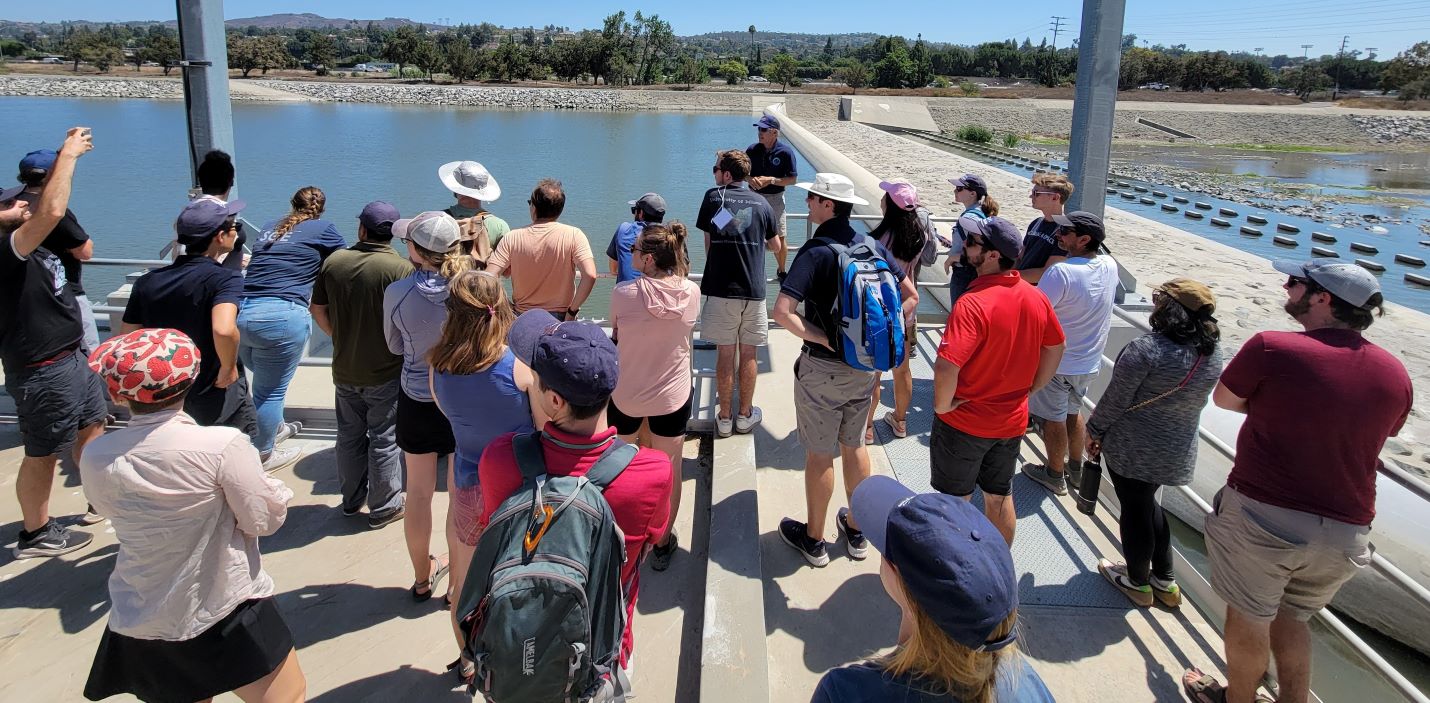CW3E Hosts the First Forecast Informed Reservoir Operations Colloquium
August 10, 2022
CW3E hosted the first Forecast Informed Reservoir Operations (FIRO) Colloquium at Scripps Institution of Oceanography from Monday, July 11th to Thursday, July 28th, which included 9 days of classroom lectures and hands-on exercises and 5 days with tours of FIRO watersheds. The Colloquium, which was sponsored by the U.S. Army Corps of Engineers, included activities that focused on providing participants with an overview of FIRO, meteorology and atmospheric rivers (ARs), numerical weather prediction, hydrology and hydrologic forecasting, observations and monitoring, and reservoir management.
The overarching goal of the Colloquium was to provide the next generation of atmospheric scientists, hydrologists, resource managers, policymakers, and others with an in depth look at the state-of-the-art methodologies to manage water resources in the western US amidst climate change, population growth, and other stressors to existing infrastructure. The Colloquium made use of the FIRO program that is ongoing in several different California watersheds as a framework. FIRO-type methodologies may be transferable to other locations where water input is driven by precipitation events with sufficient forecast skill. In the Western US and at all the current FIRO project locations, these events are ARs.
During the first week of the event, participants went on a field trip to the Prado Dam and learned in person about several facilities related to that project. During the second week, CW3E Field Researcher Benjamin Downing, Engineer Ethan Morris, and graduate student Cody Poulsen led an interactive tour of the Scripps Pier, and students participated in launching a weather balloon. The CW3E Summer Internship cohort was also able to join for this event.
The third week included tours of Lake Sonoma, Folsom Lake, New Bullards Bar, and Lake Oroville, where the participants learned more about FIRO studies and operations for water supply and flood protection. The local water entities provided in depth explanations of all the operational constraints on reservoir operations and how FIRO can increase the flood protection and water supply benefits without sacrificing water supply or flood protection.



